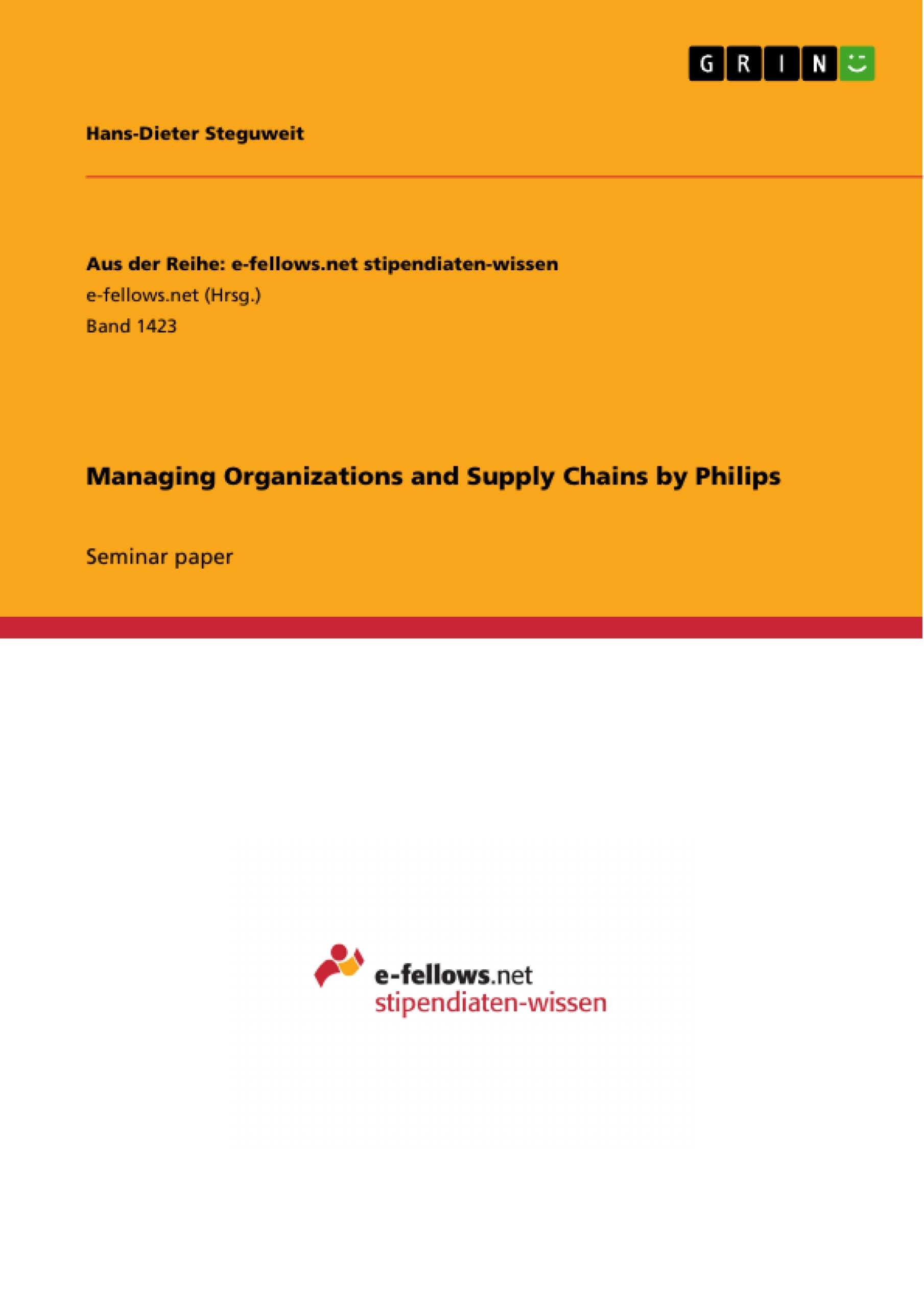Royal Philips Electronics N.V. is a Dutch company that was founded in 1891 and has since then become a major player in the electronic equipment industry. The company is headquartered in Amsterdam and employs 119.001 people worldwide, of which 78% are employed outside the Netherlands. Philips has operations in over 100 countries and identifies the Netherlands, the US, Germany, France, Brazil, Japan and China as their main markets. These countries make up 57.8% of total sales and 82.9% of total assets and are standing mainly in competition with Siemens and General Electronics.
From 1990 till last year Philips was in a phase of organizational transformation. Without restructuring the company’s portfolio in a simpler way Philips would have had extremely difficulties during the finance crises in 2008. Today the organization represents predominantly a classical Managing Diversity of Mintzberg’s five configurations which divides the company’s business into three segments: Healthcare, Consumer Lifestyle and Lighting.
In the healthcare sector Philips is leader in areas such as cardiac care, acute care and home healthcare. In 2010 Philips’ healthcare business was able to generate sales amounting to 8.6 billion EUR. The US is the largest healthcare market currently representing almost 50% of the global market. Philips’ consumer and lifestyle business is very broad covering areas such as television, shaving and beauty, multimedia and domestic appliances.
Currently this business unit employs approximately 18.400 people worldwide with registered sales of 8.9 billion EUR last year, of which 59.9% were generated in Western Europe and 40.1% in emerging markets. Philips Lighting spans the entire lighting value chain from lighting sources, electronics and controls to full applications and solutions. The company maintains sales and service organization in over 60 countries and runs manufacturing operations in 15 countries worldwide with sales of 7.6 billion EUR in 2010.5
Inhaltsverzeichnis (Table of Contents)
- INTRODUCTION
- METHODS AND THEORETICAL BACKGROUND
- APPLICATION OF METHOD
- MAIN DESIGN PARAMETERS AND ORGANIZATIONAL STRUCTURE
- CONTINGENCY FACTORS AND STRATEGIC ENVIRONMENT
- PAST ORGANIZATIONAL RESTRUCTURING AND FUTURE VISIONS
- DISCUSSION
- CONCLUSION
- APPENDIX
- LIST OF REFERENCES
Zielsetzung und Themenschwerpunkte (Objectives and Key Themes)
This research paper aims to analyze the organizational structure and management of Royal Philips Electronics N.V., focusing on how the company has adapted to market demands and navigated periods of organizational transformation. The paper will investigate the company's structure, decision-making processes, and strategic direction.
- The application of Mintzberg's organizational configurations to understand Philips' structure and management.
- The impact of the company's diversified product portfolio and global operations on its organizational design.
- The relationship between Philips' strategy, its organizational structure, and its performance.
- The role of the Board of Management and other key decision-making bodies in shaping Philips' strategic direction.
- The influence of contingency factors and strategic environment on Philips' organizational restructuring.
Zusammenfassung der Kapitel (Chapter Summaries)
- Introduction: This chapter provides an overview of Royal Philips Electronics N.V., its history, core business areas, and current position in the global marketplace. It highlights the company's successful transition through periods of organizational transformation and its focus on diversifying its product portfolio.
- Methods and Theoretical Background: This chapter discusses the theoretical framework used in the research, focusing on Mintzberg's organizational configurations. It describes the methodology employed in gathering data and the sources consulted for information on Philips' organizational structure and management.
- Application of Method: This chapter delves into the application of the chosen theoretical framework to the specific case of Royal Philips Electronics. It examines key design parameters and organizational structure, including the roles of the Board of Management, the Group Management Committee, and the Supervisory Board.
Schlüsselwörter (Keywords)
This research paper focuses on the key concepts of organizational design, management, and strategic direction, as applied to the case of Royal Philips Electronics N.V. Important themes include the application of Mintzberg's configurations, the impact of diversification and globalization, and the relationship between organizational structure and performance. The paper also explores the company's restructuring efforts, decision-making processes, and strategic direction, drawing upon the insights of a variety of sources, including Philips' annual reports, online publications, and secondary research.
- Quote paper
- Hans-Dieter Steguweit (Author), 2011, Managing Organizations and Supply Chains by Philips, Munich, GRIN Verlag, https://www.grin.com/document/300535



